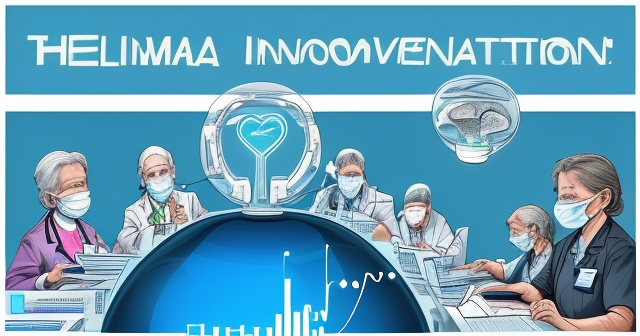Navigating Healthcare ETFs: Headwinds, Tailwinds, and the Digital Pulse
Welcome, future-focused investors! We’re about to delve into the complex yet compelling world of healthcare Exchange-Traded Funds (ETFs). Think of the healthcare sector as a vast, ever-evolving organism – sometimes robust, sometimes facing ailments, but always adapting. Traditionally, many investors view healthcare as a defensive cornerstone of a portfolio, offering stability even during economic downturns because people consistently need healthcare services regardless of the market cycle. However, like any complex system, it’s subject to internal pressures and external forces.
In 2024, we observed a notable divergence in this expected behavior. The healthcare sector, as represented by its various indices and ETFs, experienced significant headwinds that caused it to underperform the broader market, particularly the S&P 500. This wasn’t just a minor fluctuation; it was a sharp contrast to its historical role. But what caused this shift, and what does it mean for us as we look towards 2025 and beyond? More importantly, where within this sector can we find areas of potential growth and resilience, perhaps even capturing the rapid advancements in technology? Let’s unpack these layers together.
Understanding the healthcare sector as an investment landscape requires more than just looking at headlines. It involves appreciating the interplay between established giants, emerging innovators, political currents, and fundamental human needs. Healthcare ETFs offer a convenient way to gain exposure to this dynamic sector without having to pick individual stocks, providing diversification across various sub-industries like pharmaceuticals, biotechnology, medical devices, and healthcare services. But not all healthcare ETFs are created equal, and their performance is driven by the composition of their underlying holdings and the specific strategies they employ.
Our journey today will explore the recent challenges faced by healthcare ETFs, identify the potential catalysts that could drive performance in the future, and shine a light on a particularly exciting and rapidly growing area within the sector: digital healthcare, or health technology (Health Tech). This confluence of healthcare and technology represents a significant frontier, promising innovation and potentially strong investment opportunities for those who understand where to look.

Understanding healthcare ETFs can be broken down into three key components:
- Sector-specific challenges and opportunities
- The role of technology in driving innovations
- Investment strategies to maximize returns
| Component | Description |
|---|---|
| Challenges | Rising medical costs and political pressures |
| Opportunities | Health technology and innovations |
| Strategies | Choosing the right ETFs for exposure |
The 2024 Headwinds: Tumbling Giants and Political Pressures
Let’s start by dissecting the recent past. The 2024 period was marked by a notable underperformance of the healthcare sector compared to the S&P 500. This underperformance wasn’t solely due to broad market trends; it was significantly influenced by sector-specific challenges. One of the most prominent factors was the performance of some of the largest companies within the sector, particularly those heavily weighted in broad healthcare ETFs.
A prime example that significantly impacted sector performance was UnitedHealth Group Inc. (UNH). As one of the largest healthcare companies, often holding a substantial weight in market-cap-weighted healthcare ETFs like the Health Care Select Sector SPDR Fund (XLV), events affecting UNH can disproportionately influence the ETF’s performance. In late 2024, UNH experienced a sharp decline in its stock price following an unexpected leadership change and the subsequent withdrawal of its financial guidance. The company cited rising medical costs as a key pressure point, impacting its margins and overall outlook. This event sent ripples through the sector, dragging down the performance of ETFs with significant exposure to UNH.
Beyond individual corporate struggles, the sector faced broader macro and political pressures. Rising medical costs themselves are a major headwind for health insurers and service providers. A surge in demand, partly attributed to delayed procedures post-pandemic and the increasing healthcare needs of an aging population, is driving up costs. While this trend benefits certain parts of the sector (like device makers or hospitals), it squeezes the margins of insurers, which heavily impacts their profitability and stock valuations.
Furthermore, the political landscape added a layer of uncertainty. Discussions and actions surrounding drug pricing remained a significant concern, particularly for pharmaceutical companies. Potential changes in healthcare policy under a new administration, including discussions around the leadership of the U.S. Department of Health and Human Services (HHS) and stances on industry regulation, created apprehension among investors. The possibility of increased government intervention or price controls on medications directly threatened the revenue streams and profitability of major drug manufacturers, leading to cautious sentiment and impacting the performance of pharma-heavy healthcare ETFs.
| Market Pressure | Impact |
|---|---|
| Rising Medical Costs | Increased costs for insurers, affecting profitability |
| Drug Pricing Pressure | Potential for revenue loss for pharmaceutical companies |
| Political Uncertainty | Investor apprehension affecting market performance |
These combined factors – specific company challenges, rising costs, and political headwinds – created a difficult operating environment for many healthcare companies in 2024, directly translating into weaker performance for the ETFs tracking them. It served as a stark reminder that even traditionally defensive sectors are not immune to significant pressures.
Building Momentum for 2025: Innovation, Demographics, and Value
While 2024 presented significant challenges, the outlook for 2025 introduces a different dynamic, characterized by potential tailwinds that could support a rebound in the healthcare sector and its associated ETFs. Think of these tailwinds as forces pushing the sector forward, potentially counteracting the headwinds we just discussed.
One of the most powerful potential drivers is innovation. The healthcare sector is perpetually on the cutting edge of scientific and technological advancements. The development of new drugs, particularly those addressing complex diseases like Alzheimer’s or obesity (consider the impact of drugs from companies like Eli Lilly & Co. (LLY)), holds immense potential for revenue growth for pharmaceutical and biotechnology companies. Regulatory approvals for novel therapies and devices can unlock significant market opportunities, providing a boost to the companies involved and, consequently, the ETFs holding their stocks.
Another undeniable demographic force is the aging population, particularly in developed countries. As the baby boomer generation continues to age, the demand for healthcare services, treatments, and medical devices will only increase. This fundamental trend provides a long-term, structural tailwind for the entire sector. While rising costs can pressure insurers, the underlying demand growth benefits pharmaceutical companies, device manufacturers, service providers, and innovative tech firms creating solutions for senior care and chronic condition management. This persistent demand acts as a stable foundation for the sector, regardless of short-term economic fluctuations.
Furthermore, after a period of underperformance, some analysts argue that the healthcare sector, or at least certain parts of it, may be trading at relatively attractive valuations compared to the broader market or other growth sectors. A period of stock price decline without a corresponding decline in intrinsic value (earnings power, future prospects) can create opportunities for investors seeking value. If the market begins to recognize the sector’s resilience, innovation pipeline, and demographic tailwinds, capital could flow back into healthcare stocks and ETFs, driving prices higher.

These factors – groundbreaking innovation, the enduring demand from an aging global population, and potentially appealing valuations – form the basis for a more optimistic outlook for healthcare ETFs in 2025. They represent the sector’s underlying strengths and long-term growth drivers that persist despite shorter-term challenges.
The Digital Pulse: Investing in Health Technology ETFs
Now, let’s narrow our focus to one of the most dynamic and potentially transformative areas within healthcare: Health Technology (Health Tech) or Digital Healthcare. This isn’t just a buzzword; it represents a fundamental shift in how healthcare is delivered, managed, and experienced, driven by the integration of computing and technological advancements.
Think about how technology has revolutionized other industries – communication, retail, transportation. Healthcare is undergoing a similar transformation, albeit with its unique complexities and regulatory hurdles. Health Tech companies are leveraging everything from Artificial Intelligence (AI) and machine learning to cloud computing, data analytics, and connectivity to improve efficiency, enhance diagnostics, personalize treatment, and expand access to care. This infusion of technology isn’t just incremental; it’s creating entirely new business models and opportunities.
What specifically falls under the umbrella of Digital Health? It’s a broad category, but key areas include:
- Telemedicine and Telehealth: Remote patient consultations, monitoring, and diagnosis, increasing accessibility, especially in rural or underserved areas.
- Connected Medical Devices: Wearable sensors, remote monitoring equipment, smart implants that collect and transmit patient data in real-time.
- Healthcare Records Management and Data Analytics: Electronic health records (EHRs), platforms for managing patient data securely, and using AI to analyze vast datasets for insights into disease patterns, treatment effectiveness, and operational efficiency.
- Surgical Robotics: Advanced robotic systems that assist surgeons with complex procedures, often enabling less invasive techniques and faster recovery times.
- Genomics and Precision Medicine: Using genetic sequencing and data analysis to tailor treatments to individual patients.
- Digital Therapeutics: Software-based interventions designed to treat medical conditions.
| Key Areas in Digital Health | Description |
|---|---|
| Telehealth | Increasing accessibility to healthcare services remotely |
| Connected Devices | Real-time data collection and monitoring of patients |
| Data Analytics | Using AI for actionable insights on healthcare trends |
These areas represent a significant growth frontier, distinct from traditional pharmaceuticals or hospital systems. Investing in Health Tech allows you to potentially capture the upside of this technological revolution within the healthcare sector, offering a different growth profile compared to broader healthcare funds.
Spotlight on Digital Health ETFs: A Closer Look at FDHT
Given the specialized nature and growth potential of digital healthcare, it’s not surprising that dedicated investment vehicles have emerged. Health Tech ETFs provide targeted exposure to companies operating within this specific segment, allowing investors to focus on the innovation side of healthcare.
One example highlighted in the data is the Fidelity Digital Health ETF (FDHT). This ETF is designed to track the performance of global digital health firms. It doesn’t just randomly pick tech companies involved in healthcare; it focuses on firms generating a significant portion of their revenue or engaged in business activities directly related to digital healthcare products and services. This includes companies involved in areas like telemedicine, connected medical devices, surgical robotics, and healthcare records management – essentially, the core components of the digital health ecosystem we just discussed.

FDHT aims to capture the growth potential stemming from the adoption of technology in healthcare. Its strategy typically involves tracking a specific index that defines and screens for these digital health companies. The data indicates that FDHT showed strong year-to-date performance in early 2025, even outperforming the broader S&P 500 Total Return index during that period. This outperformance underscores the potential for specialized thematic ETFs focused on areas of high growth and innovation, even when the broader sector is facing headwinds.
However, it’s crucial to understand that thematic ETFs like FDHT can carry different risk profiles than broad sector funds. Their performance is highly dependent on the success and growth of a relatively narrow segment of the market. While they offer concentrated exposure to specific trends, this can also lead to higher volatility. Before investing in a Digital Health ETF like FDHT, you should carefully review its prospectus, understand its investment strategy, and assess whether this level of specialized exposure aligns with your investment goals and risk tolerance.
Navigating the ETF Landscape: From Broad Sector to Specific Innovation
The world of healthcare ETFs is diverse, offering various strategies to suit different investment objectives. Understanding the differences between broad sector funds and more specialized options is key to making informed decisions.
Most investors start with broad healthcare ETFs. These funds aim to capture the performance of the entire healthcare sector, typically holding a wide range of companies across all sub-industries. Examples include:
- Health Care Select Sector SPDR Fund (XLV): Often considered a benchmark, this is a market-cap-weighted ETF focusing on large-cap U.S. healthcare companies within the S&P 500. Its performance is heavily influenced by its top holdings, like UNH, Eli Lilly (LLY), Johnson & Johnson (JNJ), and AbbVie (ABBV).
- Vanguard Health Care ETF (VHT): Similar to XLV, VHT provides broad exposure to the U.S. healthcare market, tracking a comprehensive healthcare index. It offers a low expense ratio, characteristic of Vanguard funds.
- iShares Global Healthcare ETF (IXJ): For investors seeking international diversification within healthcare, IXJ holds healthcare stocks from developed and emerging markets globally. This broadens exposure beyond just the U.S. market.
| ETF Name | Description |
|---|---|
| Health Care Select Sector SPDR Fund (XLV) | Market-cap-weighted ETF focusing on large-cap U.S. healthcare companies |
| Vanguard Health Care ETF (VHT) | Comprehensive healthcare index tracking ETF with low expense ratio |
| iShares Global Healthcare ETF (IXJ) | Holds healthcare stocks from developed and emerging markets globally |
These broad funds offer diversification across the sector, providing exposure to everything from major pharmaceutical companies and health insurers to medical device makers and service providers. They are often chosen for their defensive characteristics and exposure to the overall growth of the healthcare industry.
Moving beyond broad exposure, we find specialized healthcare ETFs. These funds focus on specific sub-sectors or investment strategies:
- Biotechnology ETFs (e.g., SPDR S&P Biotech ETF (XBI), Loncar Cancer Immunotherapy ETF (LLYX), VanEck Biotech ETF (BBH), ALPS Medical Breakthroughs ETF (SBIO), ProShares Biotech (BIS)): These funds concentrate specifically on biotech companies involved in research, development, and commercialization of novel drugs and therapies. They are typically considered higher risk but also offer higher potential growth, driven by the success or failure of clinical trials and drug approvals.
- Digital Health / Health Tech ETFs (e.g., Fidelity Digital Health ETF (FDHT), Global X Telemedicine & Digital Health ETF (EDOC), Direxion Healthcare Innovation & Technology ETF (HTEC), Loncar Global Health Care ETF (GGHC)): As discussed, these target companies leveraging technology to transform healthcare delivery.
- Equal-Weight Healthcare ETFs (e.g., Invesco S&P 500 Equal Weight Health Care ETF (RSPH)): Unlike market-cap-weighted funds where larger companies have more influence, equal-weight ETFs give roughly equal weighting to all constituents in the index. This reduces concentration risk and can lead to different performance patterns, potentially benefiting from stronger performance in mid and small-cap healthcare companies.
Each type of ETF offers a different risk-reward profile. Broad funds provide stability and diversification. Biotech funds target high growth potential from drug innovation. Digital Health funds focus on technological transformation. Equal-weight funds offer a different approach to diversification within the sector.
Key Risks and Considerations for Healthcare ETF Investors
While the potential tailwinds for healthcare ETFs in 2025 are compelling, it’s essential to invest with a full understanding of the risks involved. The healthcare sector, like any other, is subject to various factors that can negatively impact performance.
One significant ongoing risk is political and regulatory uncertainty. Discussions around drug pricing, changes to the Affordable Care Act (ACA), and the potential appointment of new leadership at agencies like the HHS can create volatility and uncertainty for pharmaceutical companies, insurers, and service providers. Proposed policies could impact profitability, market access, and research & development incentives. Investors in healthcare ETFs must remain aware of potential legislative and regulatory changes.

The pressure from rising medical costs, as highlighted by companies like UNH, is another persistent challenge. While this benefits some parts of the sector by increasing demand, it puts pressure on the margins of health insurers and can lead to calls for stricter cost controls or price negotiations, impacting profitability across the value chain. This isn’t a short-term issue but a long-term trend influenced by demographics and technological advancements.
Furthermore, sector-specific risks exist. For instance, concentration risk can be an issue in market-cap-weighted broad healthcare ETFs like XLV, where a large portion of the fund’s assets may be allocated to a few mega-cap companies. If one of these key holdings faces significant challenges, it can disproportionately affect the ETF’s overall performance, as we saw with UNH in 2024. Specialized ETFs, like Biotech or Digital Health funds, have concentration risk in reverse – their performance is tightly linked to the success of a specific, potentially narrow sub-sector.
General market volatility also affects healthcare ETFs. While often considered defensive, they are not immune to broader market downturns. Economic recessions or significant geopolitical events can lead to sell-offs across all sectors, including healthcare.
It’s also crucial to remember the fundamental principle of investing: past performance is not indicative of future results. An ETF’s strong performance in one period does not guarantee similar performance in the future. Market conditions, sector dynamics, and the specific holdings of the ETF can change. Therefore, due diligence is paramount. Before investing, review the ETF’s holdings, expense ratio, yield (if applicable), historical performance (understanding its limitations), and investment strategy to ensure it aligns with your financial objectives and risk tolerance.
Deep Dive into Holdings: The UNH Effect and Concentration Risk
To truly understand how a broad healthcare ETF like XLV behaves, we must look closely at its composition. As a market-cap-weighted fund, its top holdings exert a significant influence on its performance. In early 2025, major constituents typically included giants like UnitedHealth Group (UNH), Eli Lilly (LLY), Johnson & Johnson (JNJ), and AbbVie (ABBV). The weighting of these stocks reflects their immense size within the healthcare market. UNH alone often constitutes a substantial percentage of the fund’s total assets.
This structure means that when UNH’s stock price fluctuates significantly, as it did following its CEO’s change and withdrawn guidance in 2024 citing rising costs, it can have a material impact on XLV’s net asset value (NAV) and, consequently, its price. If UNH drops, XLV is likely to drop more than an equal-weight fund or a specialized fund that doesn’t hold UNH or holds it with less weight. This is the essence of concentration risk in market-cap-weighted indices and ETFs.
Conversely, if a major holding like Eli Lilly (LLY) sees its stock price soar due to blockbuster drug sales or positive clinical trial results, it will provide a significant tailwind to XLV’s performance. LLY’s success in areas like diabetes and obesity treatments (with drugs like Mounjaro and Zepbound) has made it one of the most valuable companies globally, and its increasing weight in XLV has been a major driver for the ETF’s performance when those stocks perform well.
Investors choosing market-cap-weighted broad healthcare ETFs must be comfortable with the fact that a relatively small number of large companies will heavily dictate the fund’s returns. If you prefer a strategy that mitigates this concentration risk, an equal-weight ETF like RSPH might be more appealing, as it spreads capital more evenly across the sector constituents.
Specialized funds like Biotech ETFs (XBI) or Digital Health ETFs (FDHT) have a different kind of concentration risk. They are concentrated in a specific sub-sector. Their performance is tied to the trends, regulatory environment, and innovation within that niche. While this offers exposure to potentially high-growth areas, it also means the fund’s fortunes rise and fall with that specific segment, making them potentially more volatile than diversified, broad healthcare funds.
Technology’s Reach: AI and Robotics Beyond Pure Digital Health
It’s also important to recognize that the influence of technology, particularly AI and robotics, isn’t confined solely to pure Digital Health companies. Established players across the broader healthcare sector are increasingly integrating these advancements into their operations and product development. Many of these companies are significant holdings in broad healthcare ETFs like XLV, VHT, and IXJ.
Consider pharmaceutical giants using AI for drug discovery and development, accelerating the process of identifying potential drug candidates and predicting clinical trial outcomes. Or medical device companies, like Boston Scientific (BSX), incorporating AI into imaging systems or developing robotic-assisted surgical tools. Even health insurers are using AI for fraud detection, claims processing optimization, and personalizing patient engagement.
| Technology Influence | Industry Impact |
|---|---|
| AI in Drug Discovery | Accelerating identification of drug candidates |
| Robotics in Surgery | Enabling less invasive techniques |
| AI in Claims Processing | Optimizing insurer operations |
This means that investors in broad healthcare ETFs may also gain indirect exposure to technological innovation within the sector, even if the ETF isn’t specifically labeled as a “Health Tech” fund. Companies like Johnson & Johnson (JNJ) have significant medical device divisions that are active in surgical robotics. Major pharmaceutical companies like Merck (MRK) and Regeneron Pharmaceuticals (REGN) are exploring how AI can enhance their R&D pipelines.
This pervasive adoption of technology underscores the blurring lines within the healthcare sector. While dedicated Digital Health ETFs offer pure-play exposure to the technological transformation, broad healthcare ETFs also provide exposure to established companies that are actively leveraging technology to improve their business prospects and stay competitive. Understanding an ETF’s specific holdings allows you to see which technological trends you might be getting exposure to, even in a seemingly traditional fund.
How to Choose Your Healthcare ETF: Aligning Goals with Strategy
Given the variety of healthcare ETFs available, how do you decide which one is right for you? The key is to align your investment goals and risk tolerance with the ETF’s specific strategy and holdings. Think of it as finding the right tool for your particular investment task.
- For broad sector exposure and potential defense: If you’re looking for general exposure to the healthcare sector as a potentially defensive component of your portfolio, or simply want to participate in the overall growth driven by demographics and general innovation, a broad, diversified ETF like XLV, VHT, or IXJ (for global exposure) might be suitable. Consider whether you prefer a market-cap-weighted approach or an equal-weight approach like RSPH to manage concentration risk.
- For targeted growth in innovation: If you’re particularly interested in the high-growth potential driven by technological transformation in healthcare, a Digital Health ETF like FDHT or a Biotech ETF like XBI could be more appropriate. Be aware that these funds typically carry higher risk and volatility due to their focus on a specific, often less established, segment of the market. Their performance is highly dependent on scientific breakthroughs, regulatory approvals, and market adoption of new technologies or therapies.
- Consider expense ratios and yield: Don’t forget the basics. Lower expense ratios mean more of the investment return stays in your pocket. While healthcare stocks aren’t always known for high dividend yields compared to other defensive sectors, some ETFs do offer modest yields, which can contribute to total return.
- Review holdings and sub-sector allocation: Look beyond the ETF’s name. Understand which specific companies it holds and how its assets are allocated across different healthcare sub-sectors (pharmaceuticals, services, equipment, biotech, technology). Does the allocation match your view of where the opportunities lie?
Ultimately, the choice depends on whether you prioritize broad diversification, stability, or targeted exposure to specific growth drivers like technological innovation or biotech breakthroughs. It’s not uncommon for investors to use a combination of different healthcare ETFs to achieve their desired mix of exposure.
The Long-Term Case for Healthcare: Enduring Drivers
Despite the short-term fluctuations and headwinds, the long-term investment case for the healthcare sector remains compelling. Two fundamental drivers underpin this optimism, acting like powerful engines for sustained growth over decades.
Firstly, the aging global population is an irreversible demographic trend. As life expectancies increase and large populations reach older age, the demand for healthcare services – from routine check-ups and chronic disease management to advanced treatments and elder care – will continue to climb. This isn’t dependent on economic cycles in the same way discretionary spending is; healthcare becomes an increasingly essential need. This trend provides a resilient demand floor for the entire sector.
Secondly, innovation in healthcare is relentless. The pace of scientific discovery, medical technology development, and digital health integration is accelerating. Breakthroughs in genetics, diagnostics, therapeutics, and surgical techniques are constantly expanding the possibilities of what can be treated and how effectively. Companies that successfully bring truly novel and effective solutions to market stand to benefit significantly, driving growth not just for themselves but for the sector as a whole.

These enduring drivers suggest that while the path may be bumpy and subject to political and economic forces, the fundamental need for and advancement of healthcare services position the sector for long-term growth. Investing in healthcare ETFs allows you to participate in this long-term trend, potentially benefiting from both the defensive stability of established players and the dynamic growth potential of innovative companies, particularly those leveraging technology in areas like digital health.
Conclusion: Navigating a Complex but Opportunity-Rich Landscape
As we’ve explored, the healthcare ETF landscape in 2025 presents a complex picture, shaped by both lingering challenges from 2024 and promising opportunities on the horizon. The sector navigated specific corporate struggles, rising costs, and political pressures, leading to a period of underperformance relative to the broader market.
However, looking ahead, fundamental tailwinds such as groundbreaking innovation in pharmaceuticals and technology, the persistent demand from an aging population, and potentially attractive valuations offer a compelling case for renewed investor interest. Within this sector, digital healthcare stands out as a rapidly evolving area, offering targeted exposure to companies at the forefront of integrating technology like AI, telemedicine, and connected devices into healthcare delivery.
Whether you choose a broad healthcare ETF for diversified sector exposure or a specialized fund targeting areas like biotechnology or digital health, understanding the ETF’s strategy, holdings, risks, and potential drivers is crucial. No investment is without risk, and healthcare ETFs are subject to market volatility, regulatory changes, and sector-specific pressures.
By combining a deep understanding of the sector’s dynamics with careful consideration of the various ETF options, you can make informed decisions about how healthcare, including its exciting digital frontier, might fit into your investment portfolio. The journey through the healthcare investment landscape is one that requires patience, diligence, and a focus on the enduring trends that will shape health and wellness for years to come.
etf digital healthcareFAQ
Q:What are healthcare ETFs?
A:Healthcare ETFs are investment funds that track the performance of various companies in the healthcare sector.
Q:What factors affect healthcare ETF performance?
A:Factors include market conditions, company-specific events, regulatory changes, and demographic trends.
Q:Why consider investing in digital health ETFs?
A:Digital health ETFs focus on companies leveraging technology to transform healthcare, representing a rapidly growing sector with innovation potential.

留言